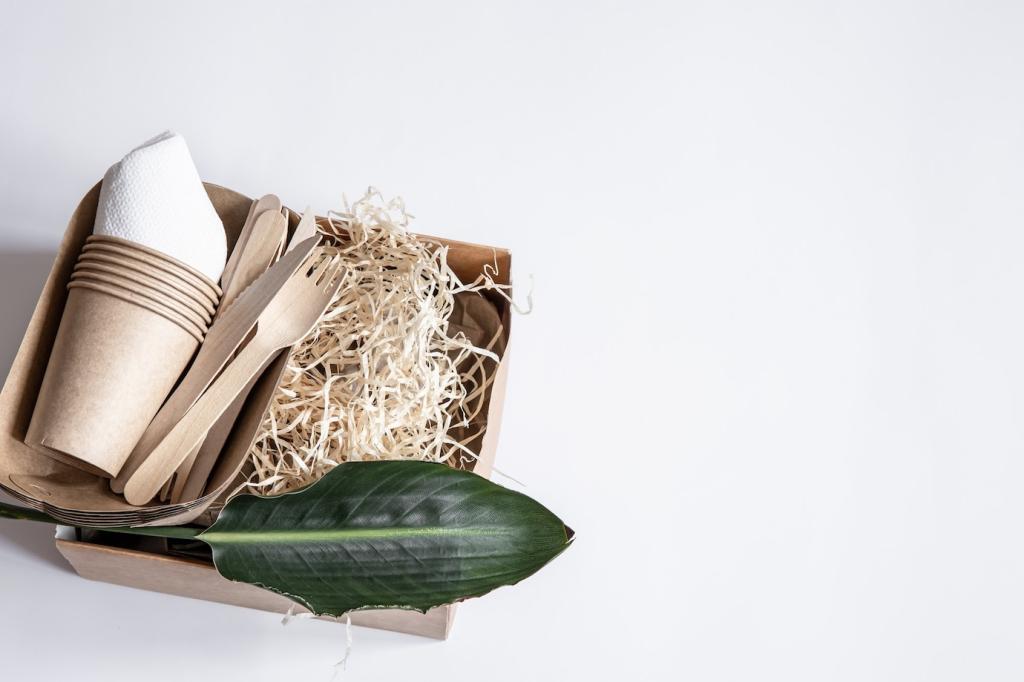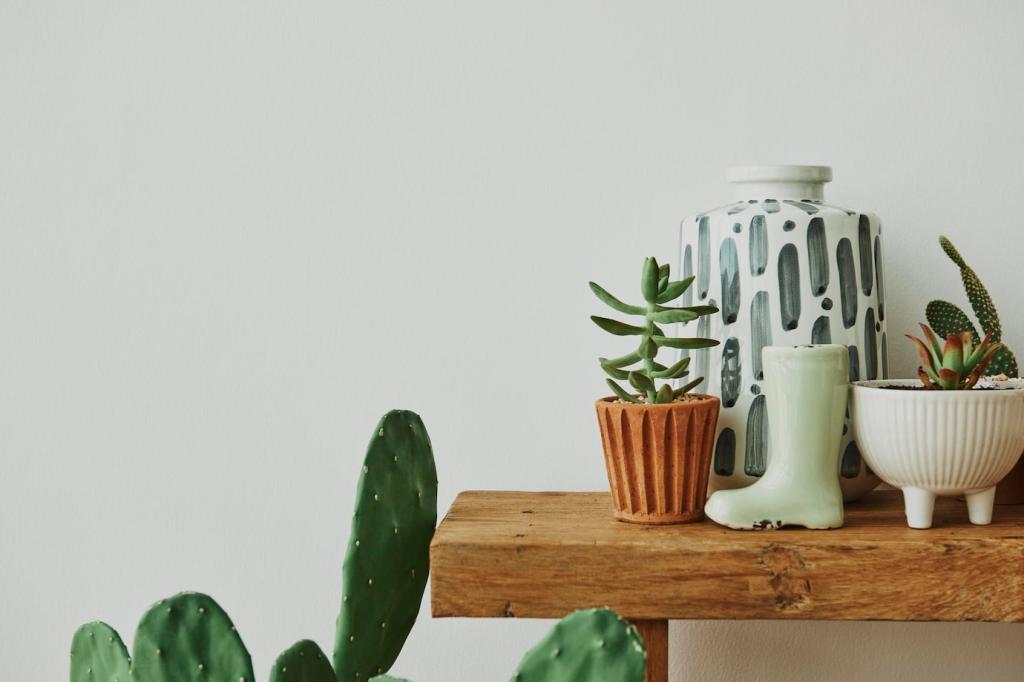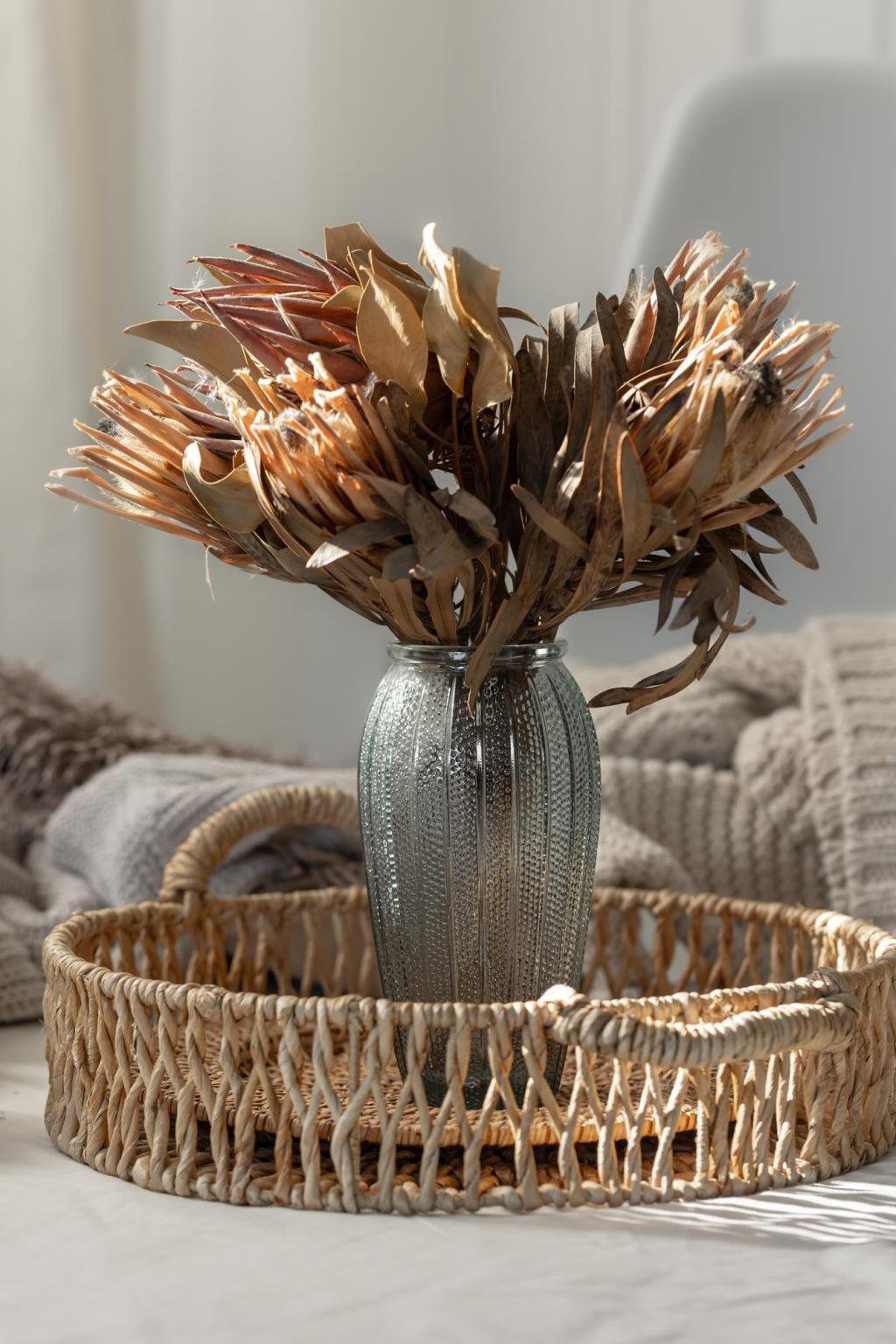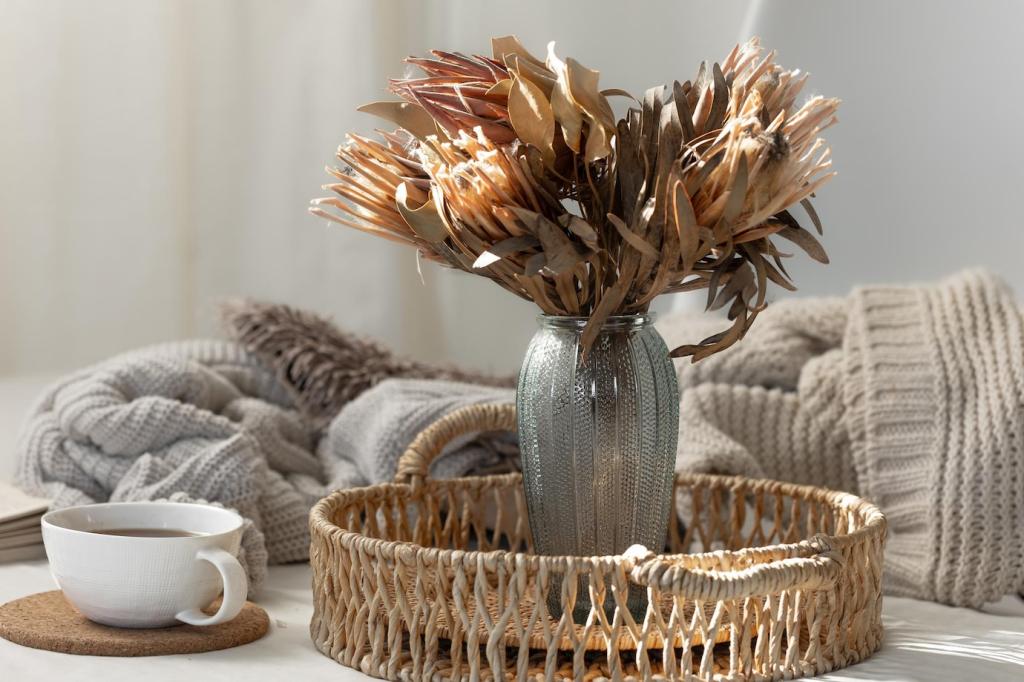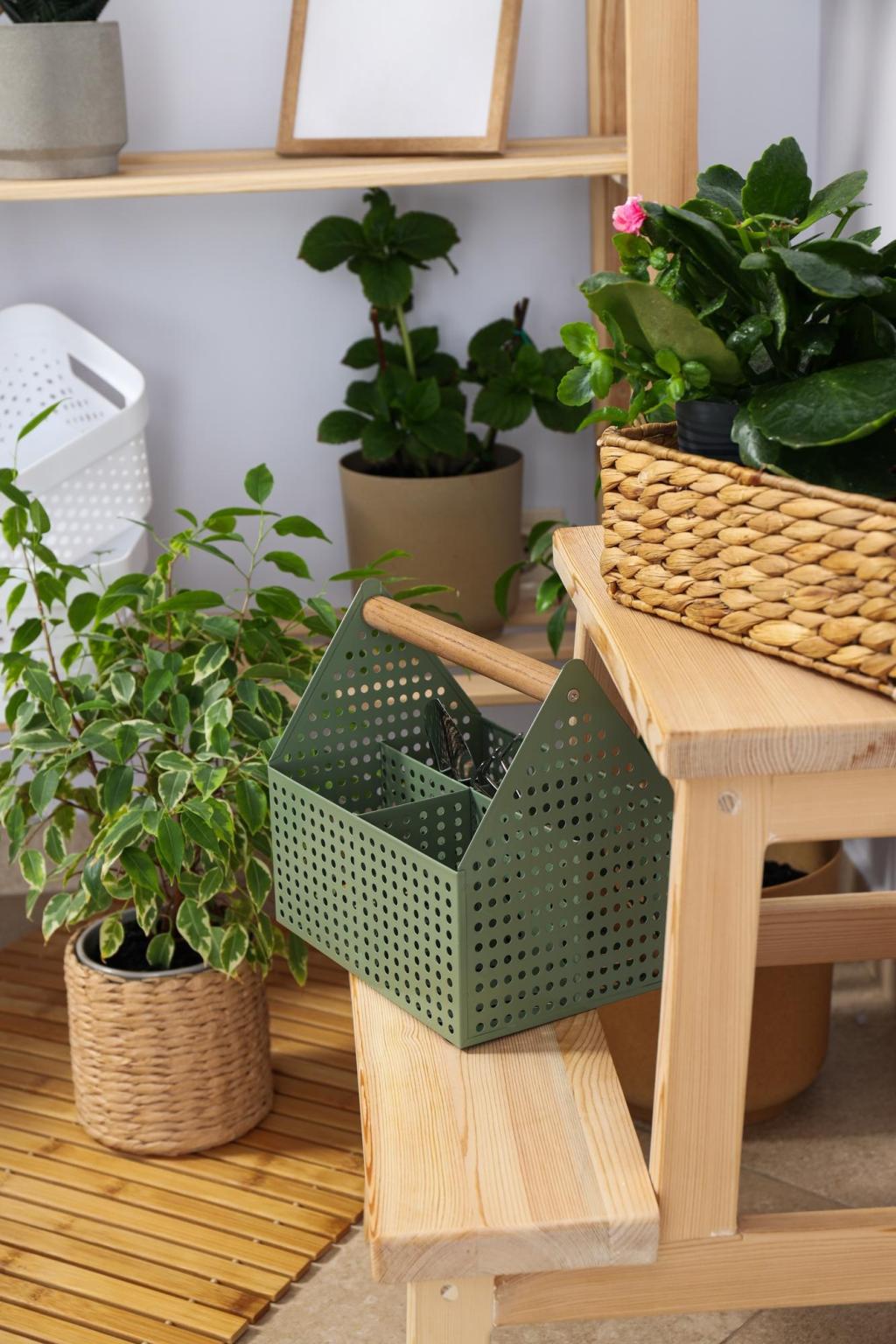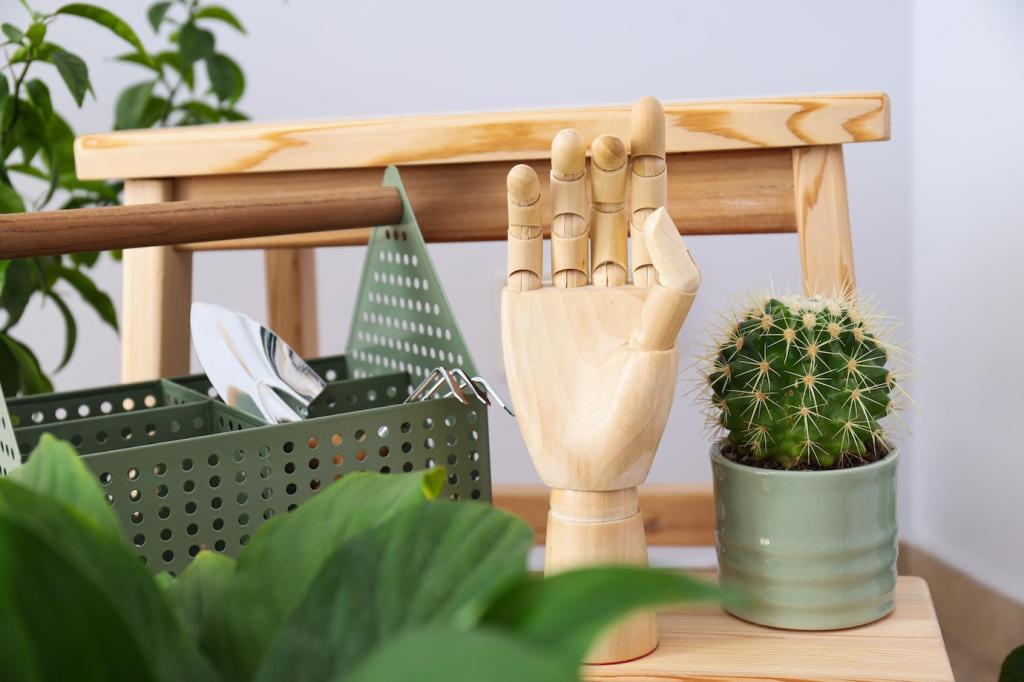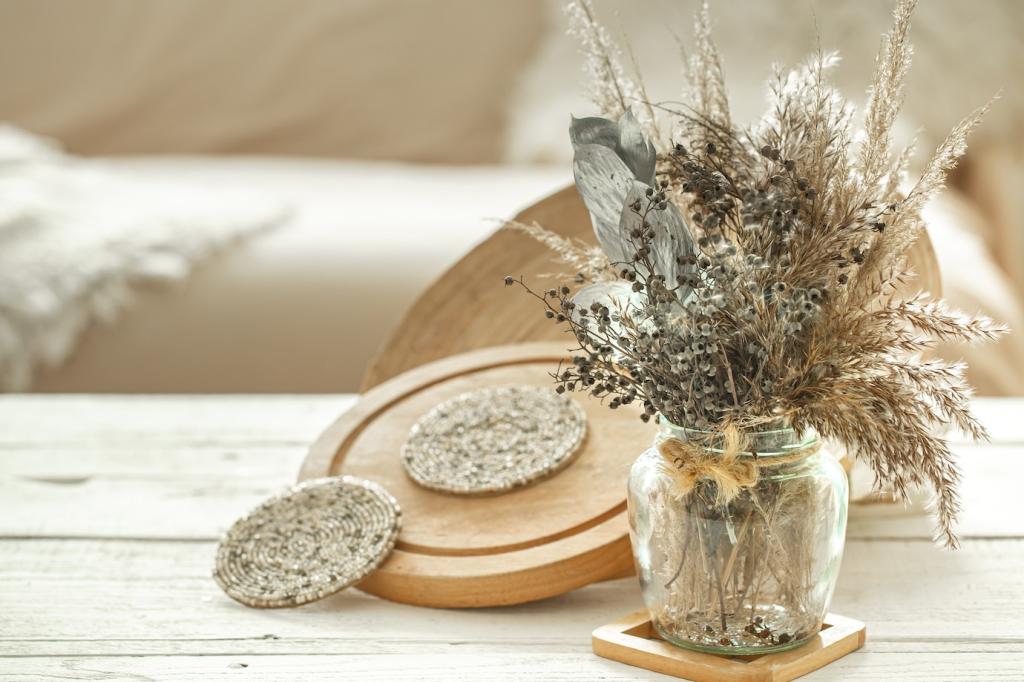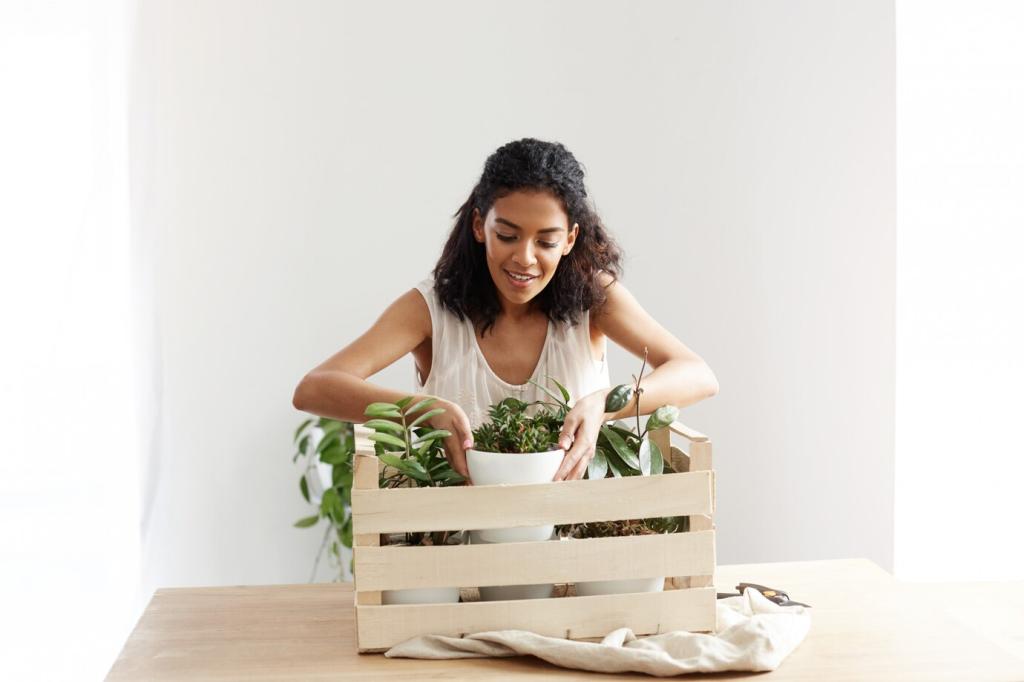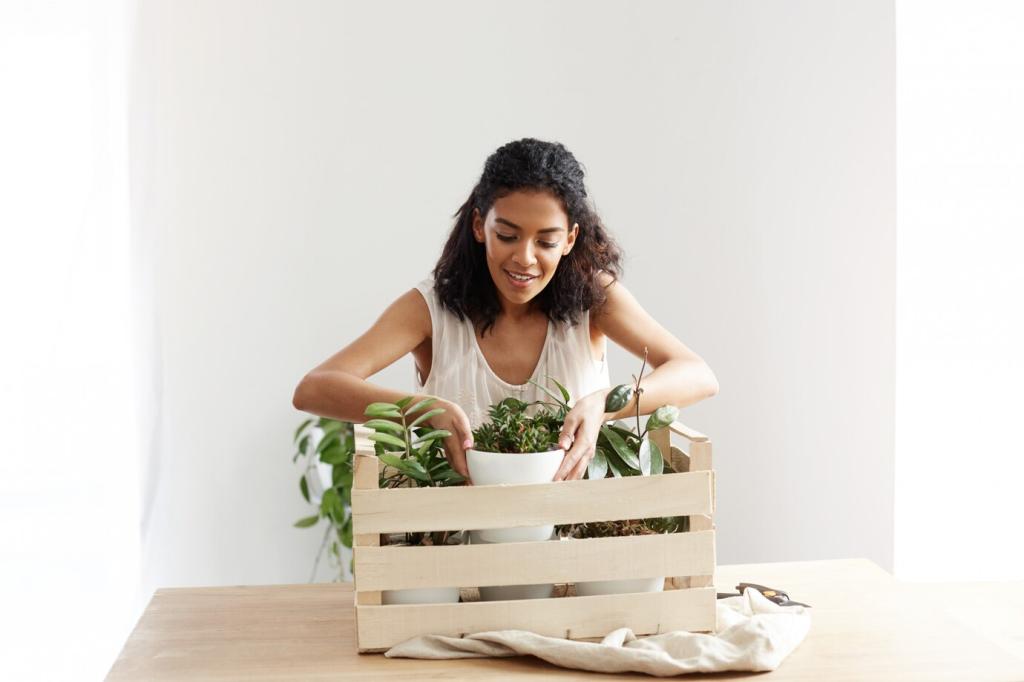Safe Choices for Homes with Pets and Kids
Consider spider plant, Boston fern, parlor palm, and areca palm, which are generally recognized as non-toxic to cats and dogs. Always verify with a trusted database such as veterinary or ASPCA resources. Comment with your pet species and we will suggest three fitting, family-friendly options.
Safe Choices for Homes with Pets and Kids
Elevate plants with shelves, macrame hangers, or wall-mounted troughs, and use decorative covers to deter digging. For kids, create a supervised touch-and-learn pot with safe species. Share what worked for your household, and we will brainstorm layout tweaks that protect both leaves and little hands.

